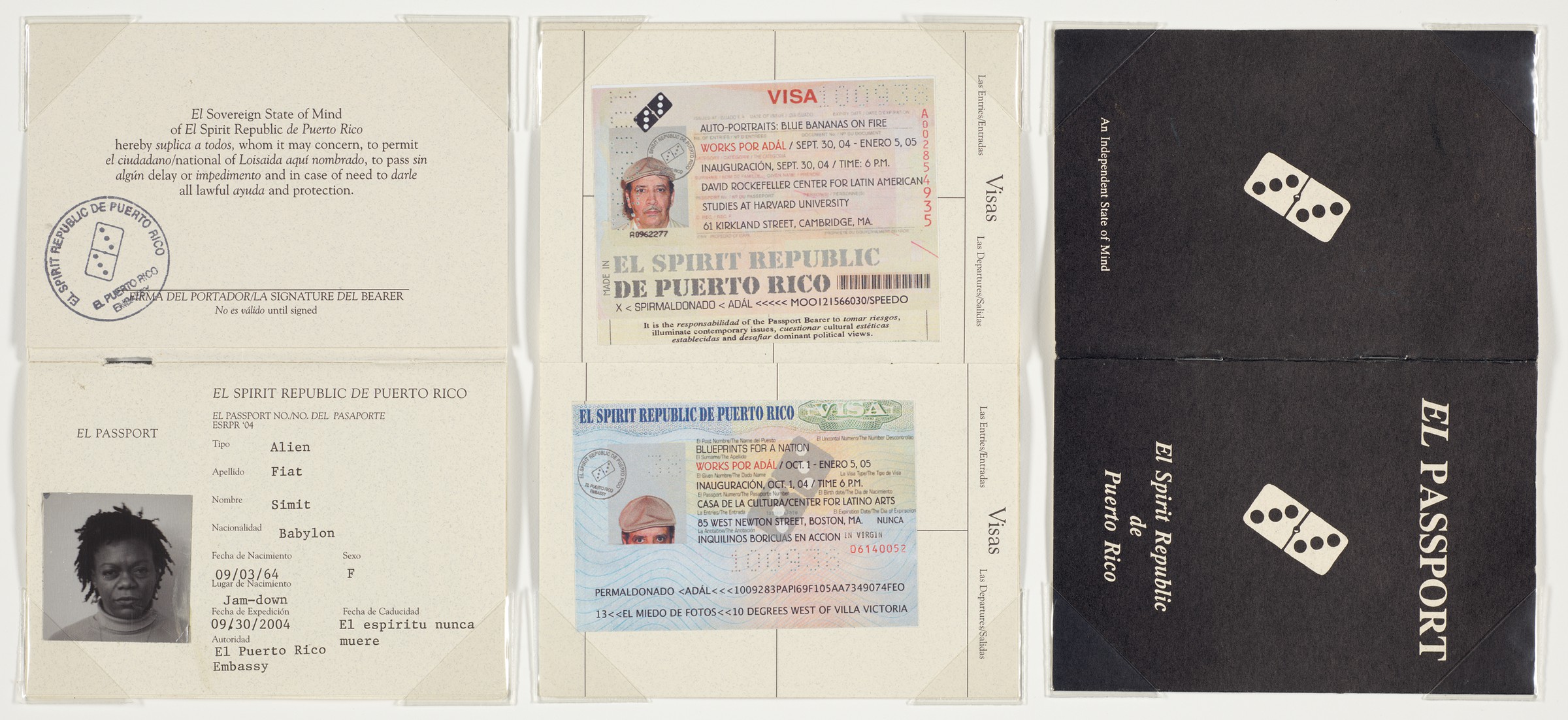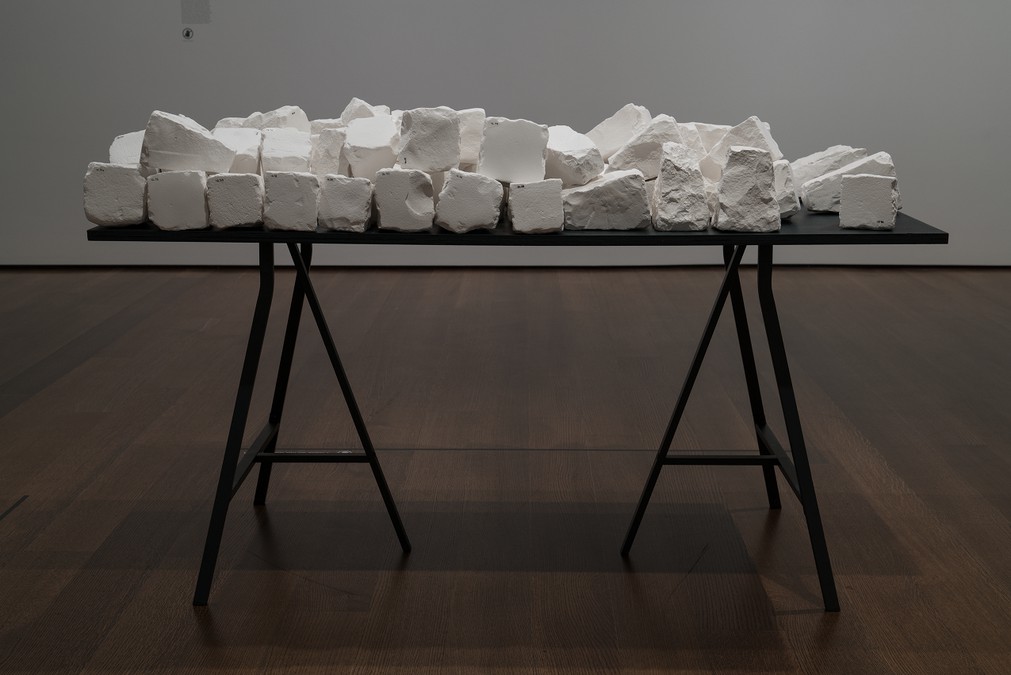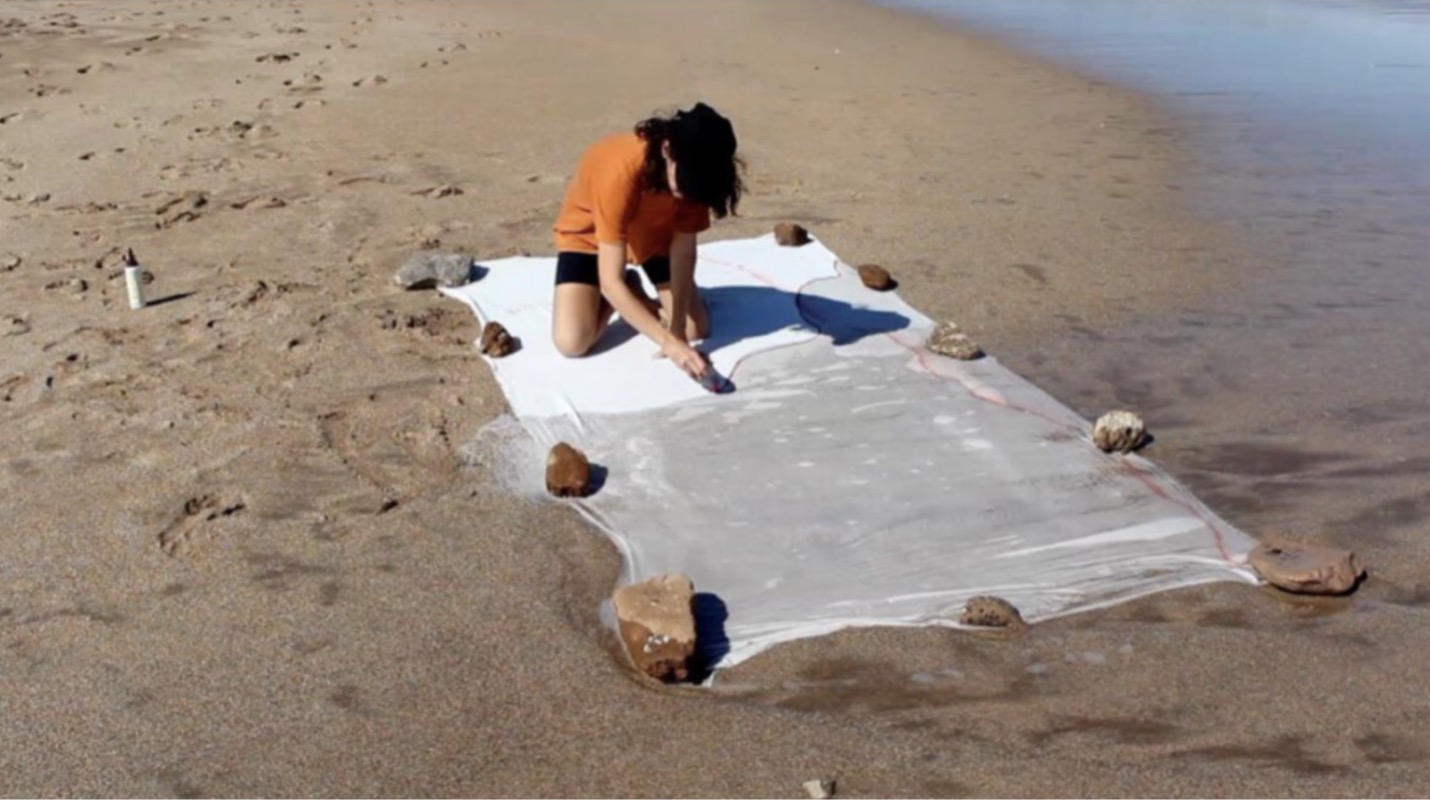Porcelain-fired cotton swabs, synthetic gypsum cobblestones, gilded beer boxes, and handsewn polyester on stainless steel pipes are among the unconventional materials used by artists whose works are included in our latest special exhibition.
Through an array of contemporary works, Crossing Lines, Constructing Home: Displacement and Belonging in Contemporary Art addresses the themes of global migration and displacement. Artists represent a broad swath of cultures and nationalities, and their works highlight such topics as the contested borders of the United States and refugee crises in the Mediterranean, Africa, and Asia.
“As a collaborative team, we regularly share and discuss works in our collections; the idea behind this exhibition came from one of those sessions,” said Makeda Best, the Richard L. Menschel Curator of Photography, who co-curated Crossing Lines with Mary Schneider Enriquez, the Houghton Associate Curator of Modern and Contemporary Art. “We noticed themes of movement, displacement, and journeys in works across our collections. We also saw culture being created, and we wondered how artists were exploring cultural exchange as well.”
Timely Topic
Global displacement is top of mind for many. In June 2019, the UNHCR (UN Refugee Agency) reported that the number of “people of concern” around the world—asylum seekers, refugees, returnees, the internally displaced, and the stateless—had reached an all-time high of 74.8 million people. At the same time, public discourse about migrants and refugees has become increasingly polarized. In the United States, the current administration has pursued immigration policies and actions that have prompted protests across the country—including at Harvard.
Examining these issues through the lens of contemporary art, Best and Schneider Enriquez organized the exhibition into key themes: movement, hybrid identities, and the reasons for and the results of migration.
Adál Maldonado’s The Passport (1995) is the first work visitors encounter in the exhibition. At first glance, it appears to consist of official passport documents, but closer inspection reveals fictitious words and images. “It’s clear that something else is happening with this object,” Schneider Enriquez said. “It’s not a passport; it’s about unpacking what a passport represents.”





